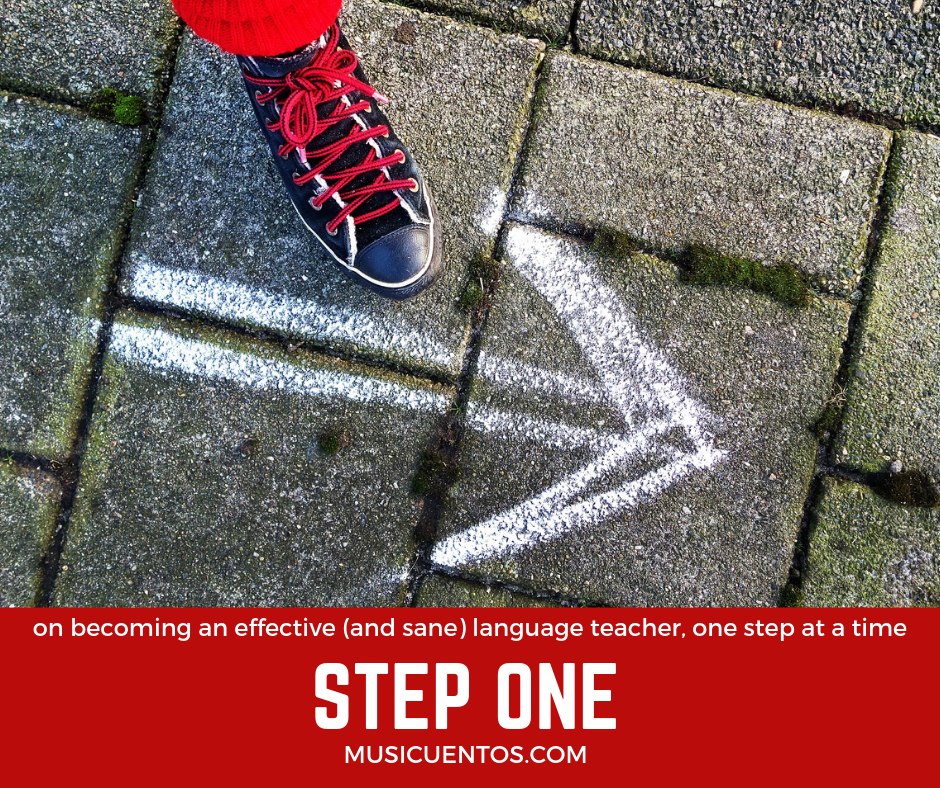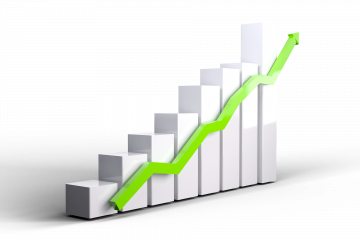It’s happened at my Camp Musicuentos workshops. It’s happened in inservice sessions. It’s happened in conference presentations and workshops and on Twitter and in blog comments. It’s the big question that many preservice, new, and second-profession teachers ask:
I want to be a great language teacher and do all this curriculum stuff and teach all the great units with the Can Dos and the culture and the proficiency. Where do I start?
I’m sure I usually look like a deer in the headlights when I get this question. A series of thoughts cross my mind:
It’s taken me years to get here.
I cannot do this in the two minutes I have to answer you.
There’s too much you don’t know.
There are very good reasons you’re drowning.
There are so many things you can do to fix it.
That’s the problem though, isn’t it? There are too many things. Too many reasons. Too much to know. It’s overwhelming, and perhaps the answer is to simply give up – not on teaching, maybe, but on doing this language proficiency thing well.
Don’t quit, teacher.
You don’t have this in you – yet. Cling on to that word yet with all your might. And let me walk you through one step at a time. I forbid you to look at other posts in this series if you’re reading this when they’ve been published. Just this week, maybe this month, focus on this one thing – this step one in your new journey.

And step one is…
The first thing you do when you build a house is prepare the site and lay a good foundation. Skilled language teaching is no different; it is no accident. It happens much more naturally, much more easily if I dare use that word, when you have the right foundation. If you don’t have it, you’ll grab at every time-saving trick, every flashy tech tip, every sanity-keeping TPT unit without another thought. But those “another thoughts” are so important. They are your philosophy of how language learning works.
And this is why that philosophy is so critical: it is the one thing that helps you discern between what’s going to work for you and your students, and what’s just going to work for you.
That’s why I recommend that, as your first step in becoming an effective language teacher, you…
check out Steve Smith’s series on second language learning and acquisition.
It’s the most accessible, well-referenced material I’ve seen to give you a quick course on how people acquire language and what that means for how they learn it in a classroom situation. It may seem very theoretical at times, but believe me – I went to grad school for two years to get an M.A. in Linguistics (Second Language Acquisition) to understand essentially what Steve has written in this series of posts. It is well, well worth your time.
Go read it. Take notes. Ruminate. And when you think you know how this will affect your choice in teaching strategies and resources, move on to Step Two (coming soon!).
4 Comments
Comments are closed.




[…] So you want to become a better language teacher, and that’s awesome! You’ve laid a good foundation in getting to know some sound research principles involving how people acquire and learn languages thanks to Steve Smith. […]
[…] So you want to become a better language teacher, and that’s awesome! You’ve laid a good foundation in getting to know some sound research principles involving how people acquire and learn languages thanks to Steve Smith. […]
[…] you need to know sound research principles involving how people acquire and learn languages (that was step one). I want you to understand what kind of language you can expect kids to build before you dive […]
[…] So you want to become a better language teacher, and that’s awesome! You’ve laid a good foundation in getting to know some sound research principles involving how people acquire and learn languages thanks to Steve Smith. […]